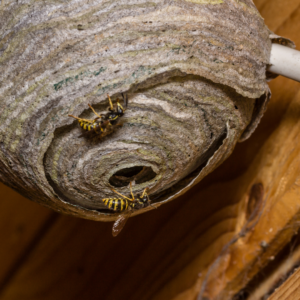Summer this year has seen some record highs in heat and humidity around New Zealand. With rising temperatures, many Kiwis, particularly in the Manawatū-Whanganui and Wellington regions, are seeing a rise in numbers of flies, mozzies and cockroaches in their homes and around their properties.
There are three common cockroach species found in Kiwi homes and gardens, German cockroaches, Gisborne and Native Bush cockroach. It’s these creepy-crawlies who are the real winners when it comes to climate change; with longer summers and warmer springs and autumns, cockroach breeding seasons have become longer and incubation times shorter.
Creating The Ideal Conditions For Thriving Cockroach Populations
Cockroaches prefer damp, dark environments, so they are often found inside walls, behind appliances and in cupboards. Certain roach species are naturally wood-loving and feed on decomposing wood. Wood chips are regular features in local backyards. Cockroaches thrive in warm and damp conditions. Although woodchips have numerous uses in your back yard for composting and garden beds, they also provide brilliant shelter, moisture, and enough space for breeding for cockroaches as well.
We often think of the impact of climate change on the environment, our oceans, our atmosphere, and our weather patterns; little do we realise that the consequences can come crawling in under the kitchen door. Cockroaches are steadily adapting to climate change and using it to their own advantage, so to speak. Rising temperatures and humidity, a preference for woodchips/bark in Kiwi backyards, all brewed together by the unprecedented rains we have been faced within the North Island – create the perfect storm for a cockroach population explosion. The rains contribute to humidity, and heavy rains drive roaches indoors.
Restoring The Balance
Never in the history of urbanisation have roaches been welcome house guests. not necessarily creatures of sanitary habits; roaches can passively transport microbes and dangerous pathogens on their bodies. Cockroaches have been implicated in the spread of 33 different types of bacteria, including E. coli and Salmonella and 6 different types of parasitic worms.
Breeding females can carry up to 50 eggs at a time, and with that in mind, one can imagine how quickly cockroach populations can escalate. It isn’t a pretty picture. It requires decisive, measured and targeted methods of population control, tackling the problem at the source and providing definitive solutions that prevent pest problems from reoccurring.
Comprehensive, Tailored and Targeted Pest Control
Using industry-leading techniques and technologies, as well as a sustainable approach to pest management, The Pest Man can provide comprehensive and tailored pest control solutions for your home and business. We assess your property and adapt our approach accordingly; we work around your schedule and budget to ensure that our service is effective, convenient and affordable to you. All of our products and practices comply with EPA NZ health and safety standards.
Our effective Cockroach population management services are offered throughout the Manawatū-Whanganui and Wellington regions and the surrounding areas. Call us at 0800 737 810 for a free, no-obligation quote today.



